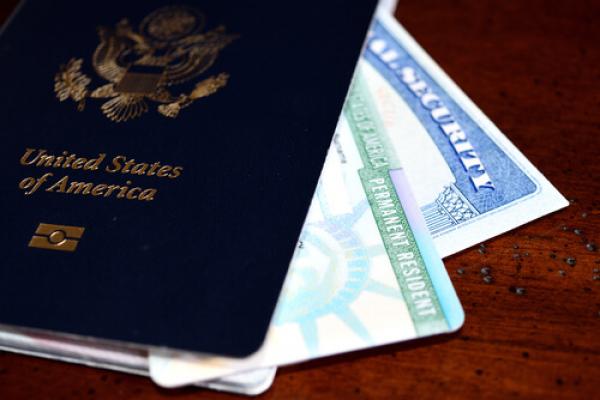Several proposals in Congress are competing to address the backlog of more than 900,000 approved employment-based green card applications by changing the way they are distributed. The House has passed and sent to the Senate a measure that would end country-based caps, which would significantly increase the number of Indian and Chinese green card holders.
Soon after the House vote, Sen. Rand Paul (R-Ky.) proposed an alternative fix to the backlog. His bill would increase the annual worldwide limit of employment-based green cards from the current 140,000 to 270,000, and exempt dependents of the job seekers from this pool, meaning a likely quadrupling in the total number of employment-based green cards handed out, experts say.
“We do very much hope that Sen. Paul stops blocking this bipartisan legislation as he is the only senator holding it up,” said a spokesman for Sen. Mike Lee (R-Utah), who is the sponsor of the Senate bill that is identical to the House-approved one. “Unfortunately, his bill does not have bipartisan support and has no future.”
Under current law, every country that has applicants is limited to 7 percent of the annual quota. Unlike the H-1B, a temporary U.S. work visa in specialty occupations, the green cards allow permanent residence in the U.S.
Under the measures proposed by Lee and passed by the House, the visas would be awarded chronologically – first come, first served. Most of those green cards would go to Indian nationals, making it harder for companies to hire people from most other countries, especially those in occupations not eligible for H1-B, like nurses from the Phillipines, many of whom oppose the legislation.
Currently, Indians face the longest wait time — potentially amounting to 151 years for certain applicants, according to an estimation in 2018 by the Libertarian Cato Institute. Most other nationals have short or no waiting lines.
Some immigration policy experts suggest that the Lee proposal would be a choice between worsening the current problem and creating new ones, unless further reforms are made in the green card and H1-B systems.
“In order for American industries to remain competitive and create more jobs, they must be able to recruit and retain the best talent in the world,” said Rep. Zoe Lofgren, (D-Fla.), sponsor of the House bill, in a statement. “This becomes increasingly difficult when workers from high-population countries must compete for the same limited number of visas as workers from low-population countries.”
According to a 2018 Congressional Research Service report, Indians account for more than 76 percent of all approved pending employment-based petitions, and Chinese, the second most backlogged category, account for around 14 percent.
“We’re just kind of taking away the pain of some people, spreading it around to more,” said Daniel Costa, director of immigration law and policy research at Economic Policy Institute, a think tank that focuses on improving incomes for low-wage workers. According to him, a seven-year to eight-year wait for all nationals after the current backlog being cleared is likely under the Lee and Lofgren bills.
“I wouldn’t want to trouble anyone at the cost of me trying to live here. But just compare the pain both sides have to go through, see whose pain is bigger and needs to be addressed,” said Manoj, a 41-year-old Indian IT worker who is in the U.S. on an H1-B visa. He has been waiting for his green card since 2013. Manoj has withheld his last name from this article out of fear that it could hurt his green card application.
Manoj, like most of his Indian counterparts, has chosen to stay in the U.S. in hopes of getting a green card because of his children, who came to the U.S. at a very young age and consider the U.S. home.
According to Costa, waiting in America on a H1-B makes immigrant workers tied to an employer, stuck in a position at work and vulnerable to exploitation.
“Workers don’t complain because once they lose the job, they can become deportable,” he said.
According to the latest Department of Homeland Security data available, around 2,000 allotted employment-based green cards remained unused in fiscal year 2017 because of the per-country cap. However, that is small compared with the 939,056 backlogged petitions estimated by a 2018 Congressional Research Service report.
“It’s kind of absurd to have these incredible backlogs and still not be using our quota,” said Laura Danielson, an experienced immigration lawyer. “This (Lee-Lofgren) bill ensures that the 140,000 will get used.”
According to Costa, the Lee and Lofgren bills would make it impossible for immigrant workers to come directly from abroad on green cards, with H1-B visas as a stopgap. “This basically turns the H1-B into a 13- to 14-year visa,” said Costa. “I strongly think that fixing the H1-B should come first, otherwise we’re going to continue to have these absurd results with the backlog.”
Costa proposed stricter labor certification, which would ensure companies search for U.S. workers first, and better protection for H1-B workers so that they are not tied to an employer, including allowing them to apply themselves for green cards.
Got something to say about what you're reading? We value your feedback!




